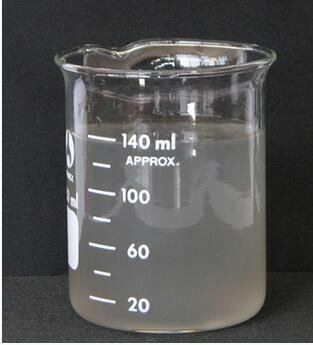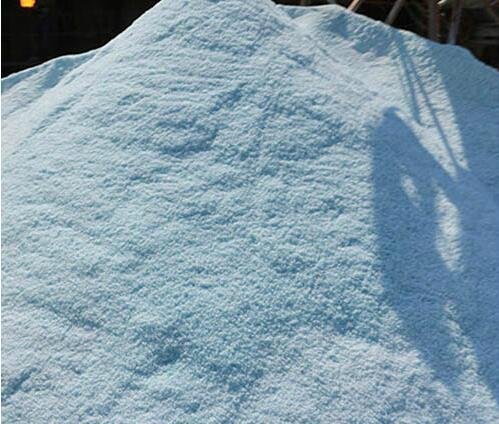| Model: | - |
|---|---|
| Brand: | FRS |
| Origin: | Made In China |
| Category: | Chemicals / Inorganic Chemical Materials / Inorganic Salt |
| Label: | sodium silicate , water glass , sodium silicateprice |
| Price: |
-
|
| Min. Order: | 5 TON |
Product Description
Sodium silicate, also known as water glass or liquid glass, available in aqueous solution and in solid form, is a compound used in cements, passive fire protection, refractories, textile and lumber processing.
Properties
Sodium carbonate and silicon dioxide react when molten to form sodium silicate and carbon dioxide.
Sodium silicate is a white solid that is soluble in water, producing an alkaline solution. There are many kinds of this compound, including sodium orthosilicate, Na4SiO4; sodium metasilicate, Na2SiO3; sodium polysilicate, (Na2SiO3)n; sodium pyrosilicate, Na6Si2O7, and others. All are glassy, colourless and dissolve in water.
Sodium silicate is stable in neutral and alkaline solutions. In acidic solutions, the silicate ion reacts with hydrogen ions to form silicic acid, which when heated and roasted forms silica gel, a hard, glassy substance.
Metal repair
Sodium silicate is used, along with magnesium silicate, in muffler repair paste. When dissolved in water, both sodium silicate, and magnesium silicate form a thick paste that is easy to apply. When the exhaust system of an internal combustion engine heats up to its operating temperature, the heat drives out all of the excess water from the paste. The silicate compounds that are left over have glass-like properties, making a somewhat permanent, brittle repair.
Automotive repair
Sodium silicate can be used in older automobiles to seal leaks in the cooling system. A jar of "liquid glass" is poured into the radiator and allowed to circulate. Minute holes and gaps are sealed, often curing radiator leaks and faulty cylinder-head gaskets. This approach is often used by disreputable used-car salespersons.
Food preservation
Sodium silicate was also used as an egg preservation agent in the early 20th Century with large success. When fresh eggs are immersed in it, bacteria which cause the eggs to spoil are kept out and water is kept in. Eggs can be kept fresh using this method for up to nine months. When boiling eggs preserved this way, it is well advised to pin-prick the egg to allow steam to escape because the shell is no longer porous.
Timber treatment
The use of sodium silicate as a timber treatment for pressure-treated wood actually began some time in the 19th century. It is s ested that that more costly "silicate of potash" (potassium silicate) may also be used, in "Handy Farm Devices and How to Make Them" by Rolfe Cobleigh, published in 1910. Since 1998 scientists have researched methods for rendering sodium silicate insoluble once the lumber has been treated with it. With or without the additional process, treating wood with sodium silicate preserves wood from insects and possesses some flame-retardant properties.
Concrete and general masonry treatment
Concrete treated with a Sodium Silicate solution helps to significantly reduce porosity in most masonry products such as concrete, stucco, plasters. A chemical reaction occurs with the excess Ca(OH)2 in the concrete that permanently binds the silicates with the surface making them far more wearable and water repellent. It is generally advised to apply only after initial cure has taken place (7 days or so depending on conditions). These coatings are known as silicate mineral paint.
Passive fire protection ("PFP")
Sodium silicates are inherently intumescent. They come in prill (solid beads) form, as well as the liquid, water glass. The solid sheet form(Palusol) must be waterproofed to ensure longterm functionality. Standard, solid, bead form sodium silicates have been used as aggregate within silicone rubber to manufacture plastic pipe firestop devices. The silicone rubber was insufficient waterproofing to preserve the intumescing function and the products had to be recalled, which is problematic for firestops that are concealed behind drywall in buildings. Pastes for caulking purposes are likewise unstable even for very short periods of time. This too has resulted in recalls and even litigation. Only 3M's "Expantrol" version, which has an external heat treatment that helps to seal the outer surface, as part of its process standard, has achieved sufficient longevity to qualify for DIBt [1] approvals for use in firestopping. Not unlike other intumescents, sodium silicate, both in bead form and in liquid form are inherently endothermic, due to liquid water in the water glass and hydrates in the prill form. The absence of mandatory ageing tests, whereby PFP systems are made to undergo system performance tests after the ageing and humidity exposures are at the root of the continued availability in North America in PFP products that can become inoperable within weeks of installation. Indiscriminate use of sodium silicates without proper waterproofing measures are contributors to the malaise. When sodium silicates are adequately protected, they function extremely well and reliably over long periods of time. Evidence of this can be seen in the many DIBt approvals for plastic pipe firestop devices using Palusol, which use waterproofed sodium silicate sheets.
Refractory use
Water glass is a useful binder of solids, such as vermiculite and perlite. When blended with the aforementioned lightweight aggregates, water glass can be used to make hard, high-temperature insulation boards used for refractories, passive fire protection and high temperature insulations, such as moulded pipe insulation applications. When mixed with finely divided mineral powders, such as vermiculite dust (which is common scrap from the exfoliation process), one can produce high temperature adhesives. The intumescence disappears in the presence of finely divided mineral dust, whereby the waterglass becomes a mere matrix. Waterglass is inexpensive and abundantly available, which makes its use popular in many refractory applications.
Water Treatment
Water glass is used as a water treatment in waste water treatment plants. Waterglass will bind to heavier molecules and drag them out of the water.
Magic Crystals
Water glass was used in the magic crystal garden toys from the 1980's. When waterglass was combined with a selection of different metals in solution, the waterglass would cause the metals to precipitate. Each metal would precipitate separately causing a different color stalagmite.
An early mention of crystals of metallic salts forming a "chemical garden" in sodium silicate is found in the 1946 Modern Mechanix magazine. This results in very colorful gardens -- much more than shown in the illustrations. Use caution with the metal salts if you do this, some are dangerous to people and animals if swallowed.
Member Information
| Zhengzhou Furuisi Chemical Co.,Ltd. | |
|---|---|
| Country/Region: | He Nan - China |
| Business Nature: | Manufacturer |
| Phone: | 15638856373 |
| Contact: | Ivan yang (Sales manager) |
| Last Online: | 15 Dec, 2017 |



